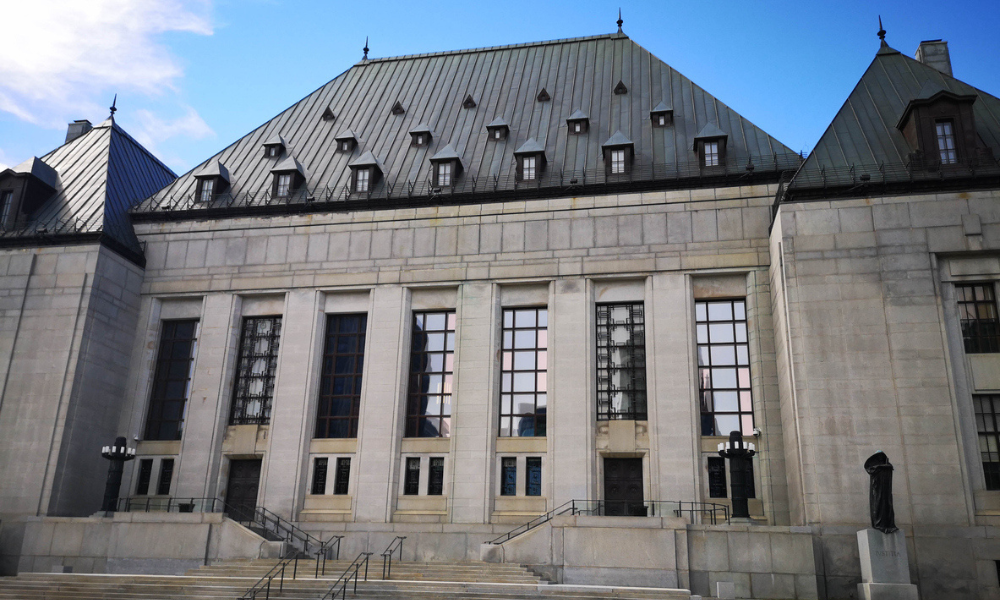Decision was split, with two justices in dissent

The Supreme Court of Canada has confirmed the manslaughter convictions of two men for participating in a brawl during which a man was stabbed to death. The court’s majority rejected the appellants’ argument that the trial judge improperly instructed the jury on how they could find that the men’s actions were a significant contributing cause to the victim’s death.
The SCC’s released its decision on the two appeals, Emanuel Lozada v. His Majesty the King and Victor Ramos v. His Majesty the King, Friday morning.
The appellants were among group of people who got into a fight at the Nuit Blanche festival in Toronto in 2013. Another person in their group was convicted of second-degree murder for a fatal stabbing that occurred during the brawl. In two separate trials, a jury convicted the appellants with unlawful act manslaughter in connection with the death.
The question for the SCC was whether the trial judge had properly instructed the jury on how they could draw a causal link between the appellants’ participation in the fight and the stabbing death. The question for jury had been whether the stabbing was an intervening act that broke the chain of causation between the fight and the death, or whether the stabbing and death were a reasonably foreseeable result of the appellants engaging in the fight.
The decision was split. The majority, which consisted of Justices Andromache Karakatsanis, Sheilah Martin and Mary Moreau, dismissed the appellants’ appeals and found the jury had been properly instructed. Justice Moreau wrote the reasons.
Moreau said that while the question of whether the intervening act is reasonably foreseeable or an independent factor is a “helpful analytical aid,” the legal standard in these situations is “the overall significant contributing cause test.” She said it is unnecessary that the appellants foresee precisely the intervening act to be found to have been a significant contributing cause. It is sufficient that “the general nature of the intervening act and the risk of non‑trivial harm are objectively foreseeable.”
Moreau found that the trial judge’s instructions on legal causation properly focused the jury’s attention on the appellants’ contribution to the victim’s death, and whether the fatal act flowed reasonably from their unlawful conduct.
Justices Mahmud Jamal and Malcolm Rowe would have allowed the appeal, set the convictions aside and ordered a new trial.
The dissenting justices agreed with the majority that an intervening act instruction is available in a case dealing with a group assault involving co-principal liability.
“The Court was unanimous in rejecting the Crown’s argument, raised for the first time at the SCC, that the defence should not benefit from a break in causation instruction where the intervening act was committed by a co-participant in the group assault as opposed to someone external to the group,” says Richard Litkowski, who acted for Ramos. “The Court rightly concluded that this new position was at odds with existing jurisprudence from the SCC.”
But according to Jamal and Rowe, the trial judge did not properly instruct the jury on the causation issue. The judge repeatedly instructed the jury that if it were reasonably foreseeable that the assaults “would continue and create a risk of non‑trivial bodily harm to him,” that “may be enough” to determine participation in the group assault legally caused the victim’s death.
The instructions “did not properly equip the jury,” said the dissenting justices. To break the chain of legal causation, the “general nature” of the intervening act and accompanying risk of harm must not be foreseeable. This standard requires “greater specificity” than the standard that the accused must not reasonably foresee the “risk of further non-trivial bodily harm.” The chain can be broken where the accused does not reasonably foresee the general nature of the intervening act but does reasonably foresee the risk of further non-trivial bodily harm, they said.
For the majority, the trial judge’s statement that it “may be enough” to establish legal causation if non-trivial injury was reasonably foreseeable must be understood in the context of the full instructions. The jury would not have found this factor satisfactory to establish causation unless they also accepted that the continuation of the assaults, and the resulting non-trivial injury, “was of the same general nature as the stabbing,” or that “the stabbing flowed reasonably” from the appellants’ conduct, said Moreau. The trial judge’s statements would not have conveyed to the jury that they could find that the causal chain remained unbroken if the first factor was reasonably foreseeable without finding the second factor was also, she said.










